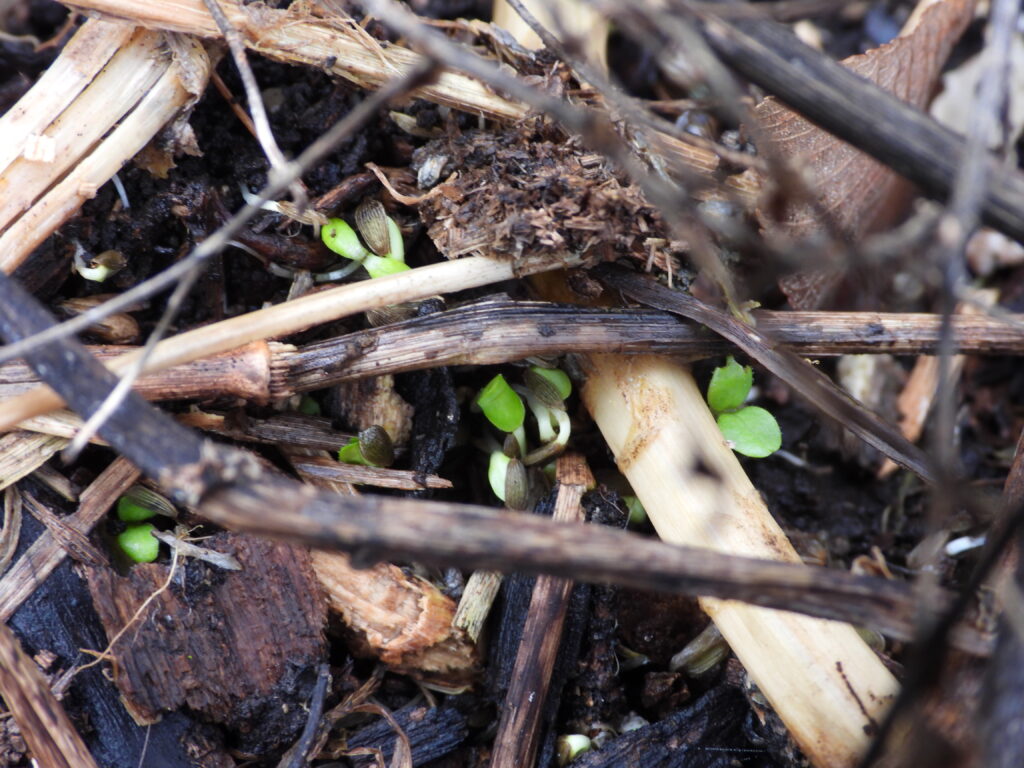Back in Virginia, March was a prime spring-planting month. Since moving to Ohio, it’s usually been an impatient-waiting month instead.
Not this year!
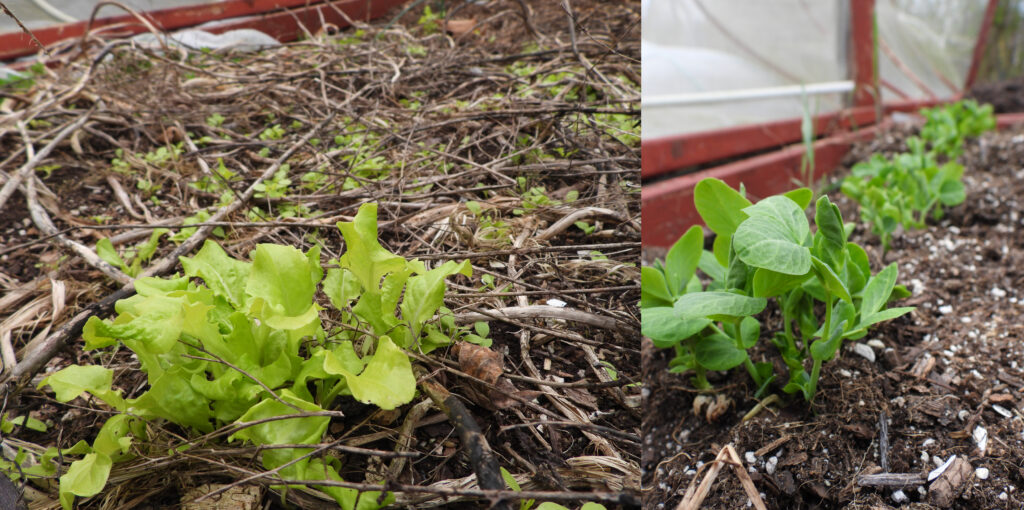
A warm winter means my test beds of early lettuce and peas germinated well, so I soon seeded more.
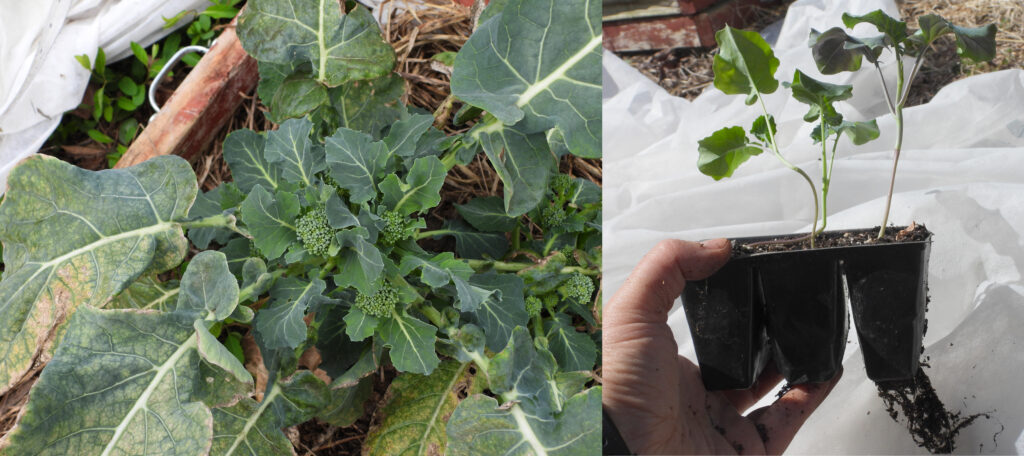
Meanwhile, in proof of the winter’s extreme mildness, we’re starting to get tiny side heads on overwintering broccoli (protected by row-cover fabric over caterpillar tunnels).
To celebrate, rather than potting up this year’s broccoli seedlings (who are already slightly stunted from outgrowing their soil), I set out half on Monday. That’s a couple of weeks earlier than is recommended for our area, but the ten-day forecast looks good.
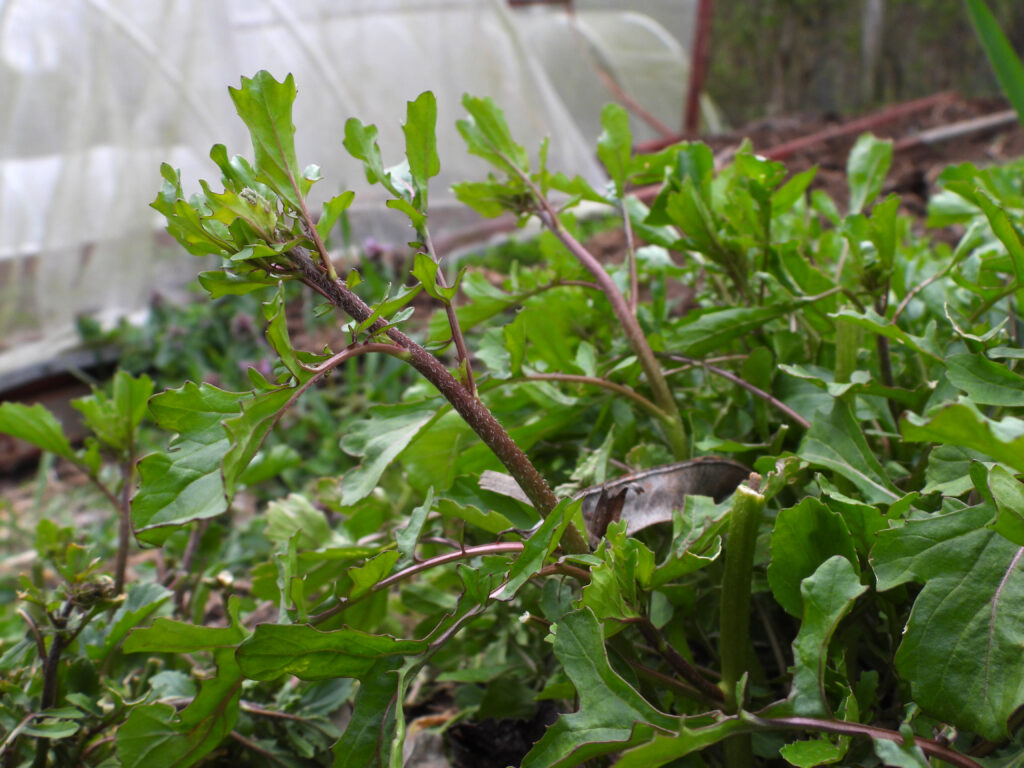
Overwintering vegetables from last year (if any survive) are always the first edibles coming out of the garden, and this year we don’t just have the broccoli pictured earlier. Arugula started feeding us even earlier despite a total lack of winter protection for the plants. They started bolting (sending up flower heads) weeks ago. I quickly snipped the bounty, steamed it slightly, then sauteed the steamed flower heads in olive oil and balsamic vinegar. Yum! Those have been good for a meal or two per week for most of March, although they’re starting to come to their end now.
Luckily, kale looks like it will fill the upcoming gap, even though a droughty summer last year meant my plants went into winter on the small side. Hopefully by the time the arugula gets away from me, we’ll have another dependable source of greens to carry us through until the spring lettuce comes in.
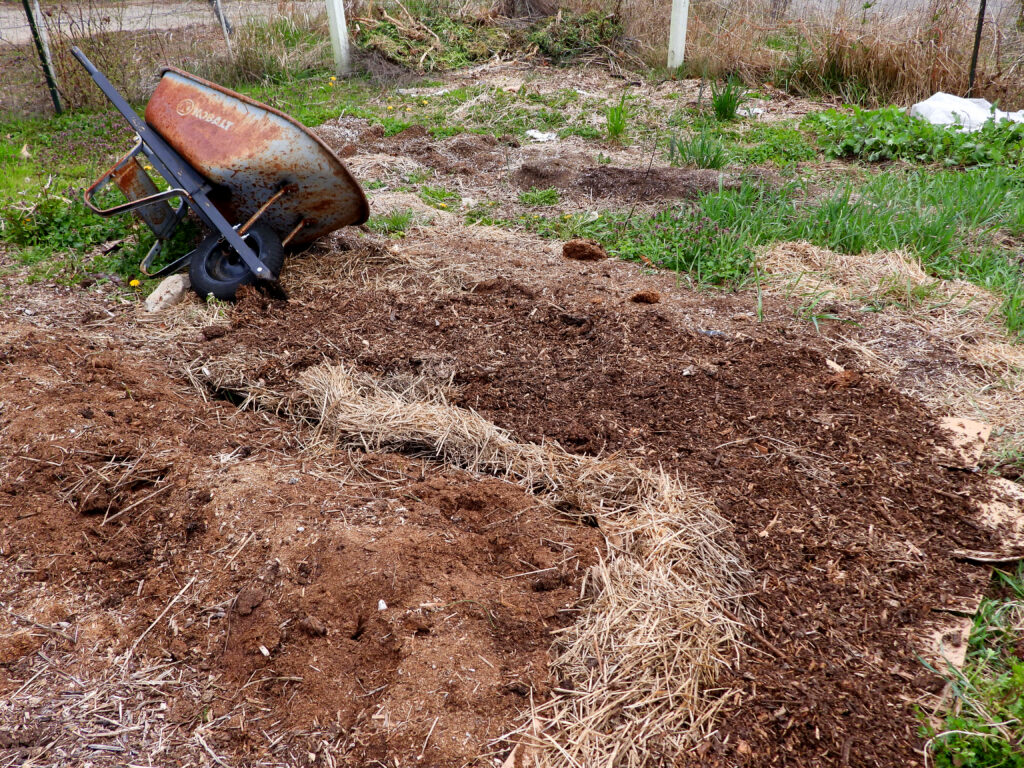
Of course, weeds start growing just as soon as vegetables do. The garden beds are usually pretty easy to manage at this time of year — half an hour of yanking fends off long-term problems in our entire plot.
Aisles can be more tricky, but I’ve saved up cardboard all winter to hit the problematic areas. Purple dead nettle and chickweed are easy to yank, while grasses or ground ivy are better off kill mulched. I tend to hit the areas right around the beds I’m using just before planting so weeds can’t encroach on my seedlings. (I’m bound to run out of cardboard before I solve all my problems, which is why they keep coming back.)
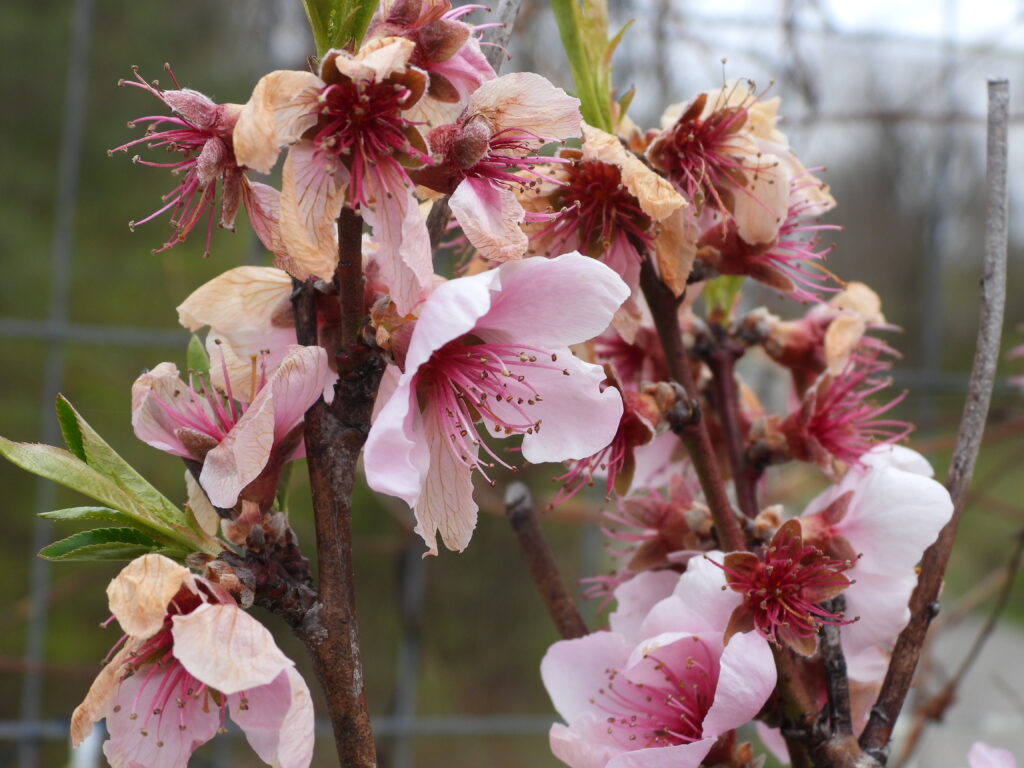
March is also the time to count your tree fruits before they hatch. We’re finally back in that mind game, having set out a nectarine a year ago. My produce count for that tree is simple: zero. Not because it bloomed too early (although it likely did) but because I’ll be picking off any young fruits to ensure the tree puts more energy into establishing its roots.
And that’s it for our late March garden. How does yours look?
